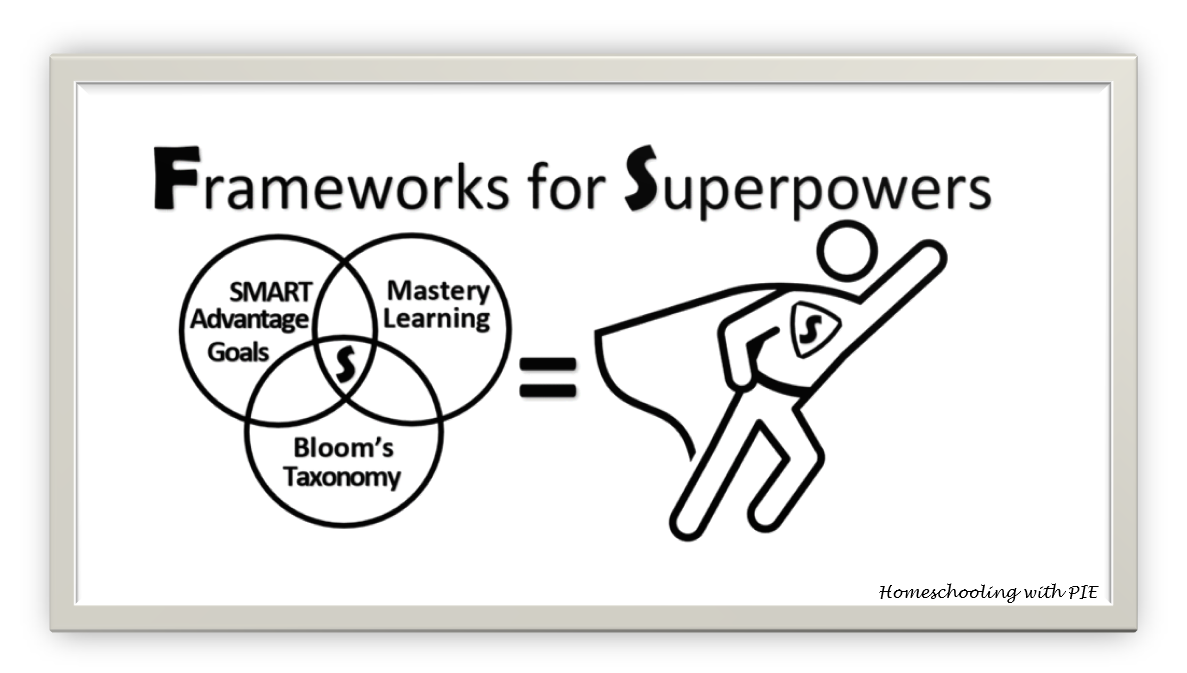MANAGING EXPECTATIONS CONCEPTS

Managing Expectations Overview
Empowering Homeschooling: Unveiling the Educational Triad of SMART Goals, Mastery Learning, and Bloom's Revised Taxonomy
In the context of homeschooling, three important frameworks that are worth considering are SMART Goals, Mastery Learning, and Bloom's Revised Taxonomy. Each of these frameworks, when applied, holds the potential to uniquely contribute to molding the educational journey for homeschooled students. Harnessing all three can empower a holistic approach and enhance the educational superpowers at play.
1. SMART Goals:
- Definition: SMART stands for Specific, Measurable, Achievable, Relevant, and Time-Bound. It is a framework designed to create clear and achievable objectives.
- Application in Homeschooling: When setting educational goals for homeschooling, it's crucial to make them specific and measurable. For example, a SMART goal for a homeschooled student might be to improve their math skills by completing a certain number of practice problems each week, with a measurable improvement in test scores by the end of the month. This framework helps parents and students define realistic and time-sensitive objectives.
2. Mastery Learning:
- Definition: Mastery learning is an instructional strategy that focuses on ensuring students achieve a high level of mastery or understanding of a concept before moving on to the next one.
- Application in Homeschooling: In a homeschooling setting, parents can tailor their teaching approach to each student's pace. Mastery learning encourages a deep understanding of a subject before progressing to more advanced topics. For example, a student may continue working on a particular math concept until they demonstrate proficiency, ensuring a strong foundation before moving on. This approach fosters a thorough understanding of subjects and helps prevent learning gaps.
3. Bloom's Revised Taxonomy:
- Definition: Bloom's Taxonomy is a hierarchical framework that classifies educational objectives into six cognitive levels: Remember, Understand, Apply, Analyze, Evaluate, and Create. The Revised Bloom's Taxonomy adds a more dynamic dimension, replacing the hierarchical structure with a more fluid model.
- Application in Homeschooling: Bloom's Revised Taxonomy is useful for creating a well-rounded curriculum. Parents can design learning activities that target different cognitive levels, encouraging critical thinking and creativity. For example, when teaching history, students could start by remembering facts, progress to understanding historical events, then move on to analyzing cause-and-effect relationships, evaluating historical perspectives, and eventually creating their own historical narratives. This framework supports the development of higher-order thinking skills and a deeper understanding of subjects.
By incorporating SMART Goals, Mastery Learning, and Bloom's Revised Taxonomy into homeschooling practices, parents can create a more effective and personalized educational experience for their children, fostering both academic achievement and holistic skill development. In this section, we’re going to take a closer look at all three.
Managing Expectations Overview